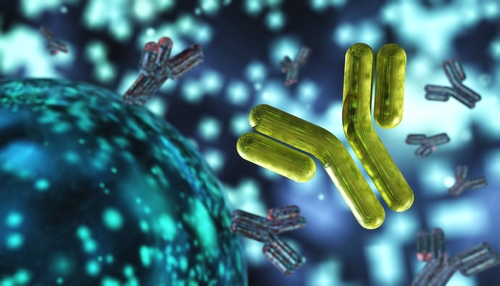Classifying breast cancers based on the mechanisms they use to avoid the immune system could be useful for designing effective immunotherapies for breast cancer patients, a study shows.
The study, “Subgrouping breast cancer patients based on immune evasion mechanisms unravels a high involvement of transforming growth factor-beta and decoy receptor 3,” was published in PLOS ONE.
Although the body’s immune system can recognize and kill tumors, cancers usually find a way to avoid being destroyed by immune cells. Immunotherapy works by activating the immune system against the tumor, and in some types of cancer, such as melanoma, there have been remarkable successes.
However, immunotherapy hasn’t been as effective in breast cancer patients.
“We’ve been trying to understand why breast cancer patients do not respond well to the current immunotherapy and cannot benefit from this major breakthrough,” Qing-Xiang “Amy” Sang, PhD, a professor of chemistry and biochemistry at Florida State University (FSU) and a co-author of the study, said in a press release.
The goal of the study was to understand how different breast cancers try to avoid immune destruction. The researchers analyzed data from more than 1,000 breast cancer patients included in The Cancer Genome Atlas — a project aimed at cataloging genetic mutations responsible for cancer — and were able to break down the data into seven “clusters” based on the immune-evading mechanisms that were active. Some of these groups even used combinations of ways to avoid the immune system.
This clustering may have implications for how patients should be treated. For example, 48% of breast cancer tumors used the CTLA-4 pathway and 34.4% used the PD-1 pathway — two of the most studied immune evasion mechanisms. This means that this fraction of patients might respond better to PD-1 and CTLA-4 inhibitors.
The researchers also found that 77.4% of patients evaded the immune system through the tumor growth factor beta (TGF-β) pathway, suggesting that targeting this pathway might be a more fruitful strategy for most breast cancer patients.
Of these patients, 57.7% also used the decoy receptor 3 (DcR3), a molecule that acts as a “decoy” for death receptors. Notably, there aren’t any current clinical strategies to target this molecule, suggesting that it might be a good target for future therapies — perhaps in combination with TGF-β-targeting therapies.
“Cancer treatment isn’t as personalized as it should be. We’ve been trying to understand what’s really going on with these tumors and how they operate. That way doctors can ultimately better treat their patients,” said Mayassa Burjas Bou Dargham, a graduate student at FSU and another co-author on the study.
“Our results indicate that there are different combinations of evasion mechanisms involved in breast cancer. We found that 77.4% of the clustered patients evade with TGF-β1-induced immunosuppression and 57.7% with a DcR3-induced counterattack,” the researchers wrote in the study.
“All clustered patients with upregulated DcR3 expression had TGF-β1 upregulated as well. Thus, targeting TGF-β1 alone or with DcR3 may be promising for breast cancer treatment,” they concluded.
The researchers are planning to follow up by specifically focusing on how a particularly aggressive subtype, triple-negative breast cancer, evades immune detection.

